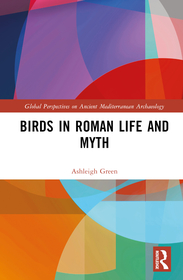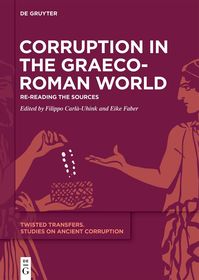
Birds in Roman Life and Myth
Series: Global Perspectives on Ancient Mediterranean Archaeology;
- Publisher's listprice GBP 130.00
-
62 107 Ft (59 150 Ft + 5% VAT)
The price is estimated because at the time of ordering we do not know what conversion rates will apply to HUF / product currency when the book arrives. In case HUF is weaker, the price increases slightly, in case HUF is stronger, the price goes lower slightly.
- Discount 10% (cc. 6 211 Ft off)
- Discounted price 55 897 Ft (53 235 Ft + 5% VAT)
Subcribe now and take benefit of a favourable price.
Subscribe
62 107 Ft

Availability
Estimated delivery time: In stock at the publisher, but not at Prospero's office. Delivery time approx. 3-5 weeks.
Not in stock at Prospero.
Why don't you give exact delivery time?
Delivery time is estimated on our previous experiences. We give estimations only, because we order from outside Hungary, and the delivery time mainly depends on how quickly the publisher supplies the book. Faster or slower deliveries both happen, but we do our best to supply as quickly as possible.
Product details:
- Edition number 1
- Publisher Routledge
- Date of Publication 3 March 2023
- ISBN 9781032162867
- Binding Hardback
- No. of pages248 pages
- Size 234x156 mm
- Weight 560 g
- Language English
- Illustrations 46 Illustrations, black & white; 43 Halftones, black & white; 3 Line drawings, black & white 842
Categories
Short description:
This book examines birds in Roman life and myth, focusing primarily on the transitional period of 100 BCE to 100 CE within the Italian peninsula.
MoreLong description:
This book explores the place of birds in Roman myth and everyday life, focusing primarily on the transitional period of 100 BCE to 100 CE within the Italian peninsula.
A diverse range of topics is considered in order to build a broad overview of the subject. Beginning with an appraisal of omens, augury, and auspices – including the ‘sacred chickens’ consulted by generals before battle – it goes on to examine how Romans farmed birds, hunted them, and kept them as pets. It demonstrates how the ownership and consumption of birds were used to communicate status and prestige, and how bird consumption mirrored wider economic and social trends. Each topic adopts an interdisciplinary approach, considering literary evidence alongside art, material culture, zooarchaeology, and modern ornithological knowledge. The inclusion of zooarchaeology adds another dimension to the work and highlights the value of using animals and faunal remains to interpret the past.
Studying the Roman view of birds offers great insight into how they conceived of their relationship with the gods and how they stratified and organised their society. This book is a valuable resource for bird lovers and researchers alike, particularly those studying animals in the ancient world.
The title of the series “Global Perspectives on Ancient Mediterranean Archaeology,” of which Green’s monograph is the inaugural volume, helps the reader refine his/her expectations, as it suggests a focus on the physical remnants of avian bones and avian detritus; yet at the same time, “Global Perspectives” points at a breadth not limited to an archaeological lens. Indeed, Green’s work (and I assume the goal of the series) moves beyond disciplinary divisions and instead tackles the topic from a range of approaches and sources: zooarchaeological evidence, (e.g., in her discussion of chickens on p. 96) and, just as importantly, its absence (e.g., the absence of peacock bones from Roman archaeological sites, p. 118); a range of literary works (e.g., by Columella, Juvenal, and Pliny); and an array of artistic works, including paintings, mosaics, and carvings. Using this range of primary sources, Green successfully shows how “taking a ‘bird’s-eye view’ of history is an effective method for interpreting and understanding cultural beliefs and social stratification” (p. 7).
- Alison L. Beringer, Montclair State University
MoreTable of Contents:
Introduction; 1. Omens, Augury, and Auspices; 2. The Augural Chickens; 3.Farming and Aviculture; 4. Fowling and Bird-Catching; 5. Pets and Pleasure
More




